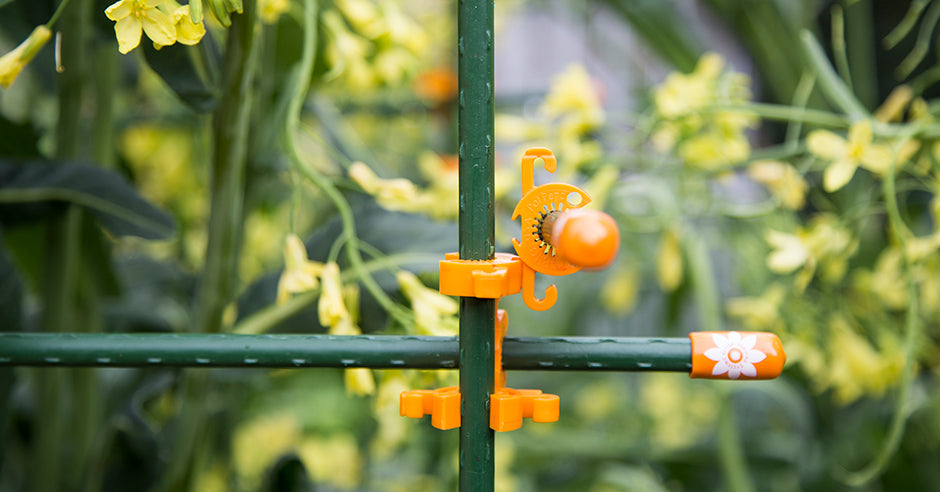
April showers bring, well, you know. So it’s no surprise that May is a busy month for gardeners.
In addition to the poem’s requisite flowers, May also brings sprouting seeds, shooting shoots and ripening of early vegetables. And while the rising mercury makes it tempting to start planting, May has a tendency to leave us cold—and if we’re not cautious, left with damaged plants. So be sure to protect your seedlings from late freezes, heavy rains and strong winds.
Of course, warmer days are ahead. Now’s the time to start thinking about good canopy management and plant support strategy.
Why?
Well, for starters, it can make all the difference between a bountiful harvest of fruit, veggies and flowers—and a great big waste of time and water. (After all, broken and damaged stems, which can result from poor plant support, are entryways for pests and disease.) Plus, canopy management and plant support strategies help plants to really do their thing, like letting vines climb, top-heavy plants spread and bushes to, uh, bush.
Picking the right support system is a lot like picking the right planting location. It comes down to available space, the surrounding environment, the plant’s growth behavior, even daily temperatures and the wind.
Because of the variety of, well, variables, the best solution is often to customize a plant support on a plant by plant basis. Here are a few suggestions to consider:
- Cages are great for fast-growing annual plants that need a large canopy spread to promote maximum production. Tomatoes and cannabis come to mind.
- Some young plants need support for early growth. (Just like people!) Peas on a trellis or a bean growing on a grippable pole are just two examples.
- Cucumbers and melons can be grown on a pyramid or an A-frame. Allowing the fruit to droop suspended above the ground keeps the deliciousness away from rot and hungry caterpillars (which are cute for books but not plants).
- Using surrounding features or existing supports can save space and add visual appeal. A lean-to lattice on a fence line, placed with clip netting overhead, can allow strawberries to grow without birds picking them off.
Gardening is rewarding for all ages. Growing food, planting trees and beautifying our world with greenery are among the meaningful things we can do for ourselves—not to mention the earth.
Let me know if you need any advice for how and where to build the best plant support for your garden. I’ve got ideas for whatever you grow and wherever you grow it. It’s kind of my thing.
Thanks for reading.
Peace, love and flowers,
Jason
